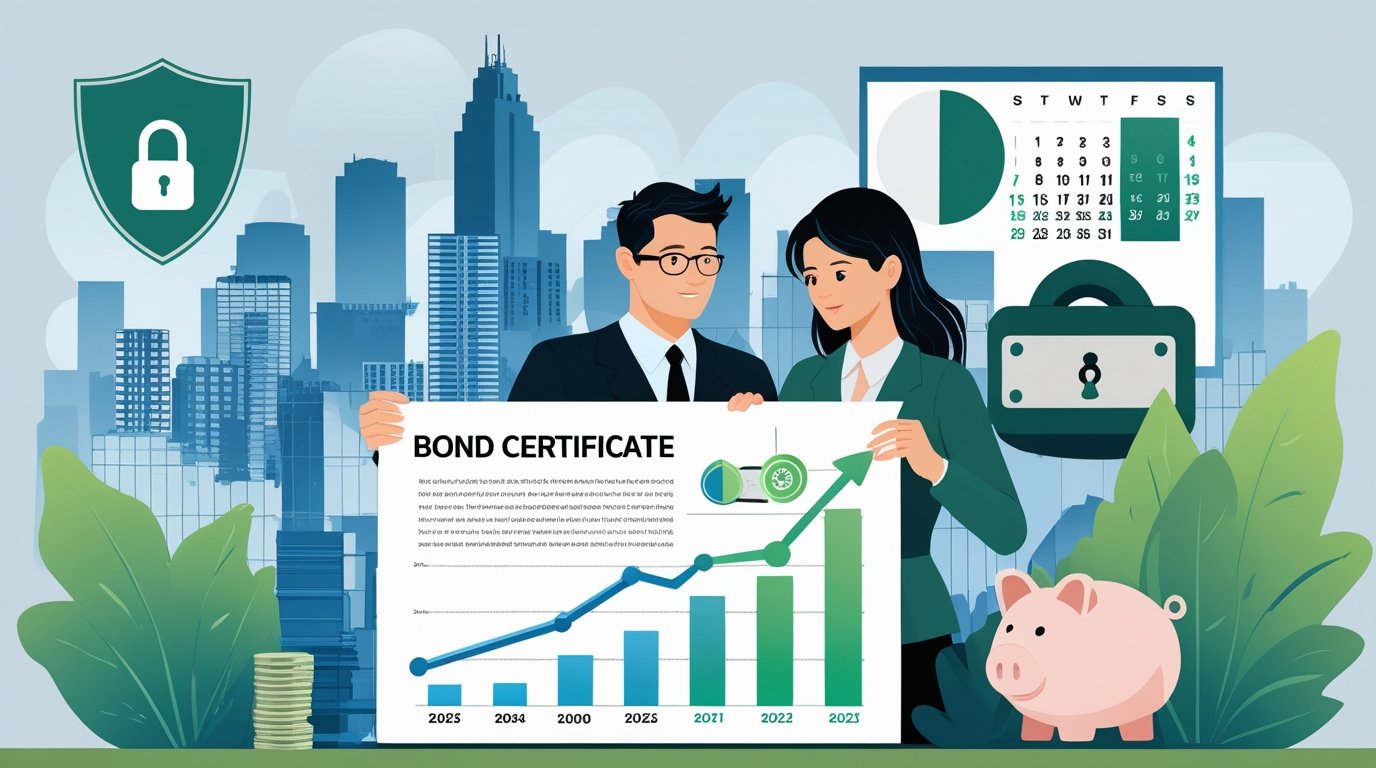In an era of market volatility and economic uncertainty, investors are searching for safe investment options to protect their wealth. Bonds, often dubbed the “safe haven” of investments, promise steady returns and lower risk compared to stocks or cryptocurrencies. But are bonds truly safe in 2025, with rising interest rates and global economic shifts? This article unpacks understanding bonds, exploring their types, benefits, risks, and whether they deserve a spot in your portfolio. Whether you’re a beginner or a seasoned investor, our guide offers actionable insights to navigate the bond market confidently.
What Are Bonds?
A bond is a loan you make to a borrower—typically a government or corporation—in exchange for interest payments over a set period. When the bond matures, you get your initial investment (principal) back. Think of bonds as IOUs that provide predictable income, making them a cornerstone of safe investing.
Types of Bonds
- Government Bonds: Issued by governments (e.g., U.S. Treasury bonds), considered low-risk.
- Corporate Bonds: Issued by companies, offering higher yields but more risk.
- Municipal Bonds: Issued by local governments, often tax-exempt.
- Savings Bonds: Low-cost, government-backed bonds for retail investors.
- Green Bonds: Fund eco-friendly projects, gaining traction in 2025.
Case Study: In 2024, U.S. Treasury bonds saw renewed interest as investors sought stability amid stock market dips, with 10-year yields hitting 4.5% (Federal Reserve, 2024).
Why Consider Bonds in 2025?
Bonds appeal to investors seeking stability, income, and diversification. Here’s why they’re worth considering:
- Predictable Income: Regular interest payments (coupons) provide steady cash flow.
- Lower Volatility: Bonds are less prone to wild price swings than stocks.
- Diversification: Balances risk in a portfolio heavy with equities or crypto.
- Capital Preservation: Government bonds, especially, protect your principal.
Suggested Visual: A graph comparing bond yields vs. stock market returns over the past decade.
Are Bonds a Safe Investment?
While bonds are often labeled safe investments, they’re not risk-free. Understanding their risks and rewards is key to deciding if they suit your goals.
Benefits of Investing in Bonds
- Stability: Government bonds, like U.S. Treasuries, are backed by the “full faith and credit” of the government.
- Fixed Income: Ideal for retirees or those needing consistent cash flow.
- Tax Advantages: Municipal bonds offer tax-free interest in many cases.
- Accessibility: Bonds like U.S. Savings Bonds start at just $25.
Risks of Bonds
- Interest Rate Risk: When rates rise, bond prices fall, impacting resale value.
- Credit Risk: Corporate bonds may default if the issuer faces financial trouble.
- Inflation Risk: Fixed returns may lose value if inflation outpaces yields.
- Liquidity Risk: Some bonds are harder to sell quickly without a loss.
Example: In 2023, rising interest rates caused a dip in bond prices, affecting investors holding long-term bonds. Those who held to maturity, however, still received their principal and interest.
How to Invest in Bonds Wisely in 2025
To make bonds a safe investment, follow these strategies:
1. Match Bonds to Your Goals
- Short-Term Goals: Choose short-term bonds (1-3 years) for liquidity.
- Long-Term Goals: Opt for 10-year Treasuries or corporate bonds for higher yields.
- Tax Planning: Consider municipal bonds for tax-free income.
2. Diversify Your Bond Portfolio
Spread investments across government, corporate, and municipal bonds to reduce risk. Bond mutual funds or ETFs like the iShares Core U.S. Aggregate Bond ETF (AGG) offer instant diversification.
3. Stay Informed on Interest Rates
Monitor Federal Reserve announcements, as rate hikes impact bond prices. In 2025, experts predict rates may stabilize around 4-5%, making shorter-term bonds attractive.
4. Use Trusted Platforms
Invest through reputable brokers like Fidelity, Vanguard, or Charles Schwab. For direct purchases, use TreasuryDirect.gov for U.S. government bonds.
Internal Link: Explore our guide to low-risk investments.
External Link: Federal Reserve Economic Data for real-time rate updates.
What’s New in Bonds for 2025?
The bond market is evolving with global trends. Here’s what’s shaping bonds in 2025:
- Rising Green Bonds: Investors are flocking to bondsintre bonds funding renewable energy projects, with $150 billion issued globally in 2024 (Bloomberg).
- Inflation-Protected Bonds: Treasury Inflation-Protected Securities (TIPS) gain popularity as inflation concerns linger.
- Digital Bond Platforms: Blockchain-based bond trading platforms emerge, offering faster settlements.
- Higher Yields: Corporate bonds offer 5-7% yields, tempting risk-tolerant investors.
Suggested Visual: A pie chart showing the allocation of global bond issuances (government, corporate, green) in 2024.
Pros and Cons of Investing in Bonds
| Aspect | Pros | Cons |
|---|---|---|
| Risk Level | Low for government bonds | Higher for corporate/high-yield bonds |
| Returns | Predictable, steady income | Lower than stocks over long term |
| Liquidity | Easy to sell for most bonds | Some municipal bonds less liquid |
| Tax Benefits | Tax-exempt for municipal bonds | Taxable interest on most bonds |
FAQ Section
FAQ 1: Are Bonds Safer Than Stocks?
Bonds are generally safer than stocks due to lower volatility and guaranteed principal repayment (for high-quality bonds). Government bonds, like U.S. Treasuries, are nearly risk-free for default but face interest rate and inflation risks. Stocks offer higher long-term returns but come with greater price swings. For a safe investment, bonds suit conservative investors, while stocks appeal to those seeking growth. Diversifying with both can balance risk and reward.
Action: Assess your risk tolerance and goals before choosing. Use tools like Vanguard’s risk calculator to guide decisions.
FAQ 2: How Do I Buy Bonds?
You can buy bonds through:
- Brokers: Platforms like Fidelity or Schwab offer access to government, corporate, and municipal bonds.
- TreasuryDirect: Purchase U.S. Treasury bonds directly from the government.
- Bond Funds/ETFs: Invest in diversified bond portfolios via funds like Vanguard’s Total Bond Market Fund.
- Banks: Some offer savings bonds or CDs with bond-like features.
Tip: Compare fees and yields before investing. Check Investopedia for broker reviews.
FAQ 3: What Are the Best Bonds for Beginners?
For beginners, start with:
- U.S. Treasury Bonds: Low risk, backed by the government.
- Savings Bonds: Affordable, starting at $25, with no market risk.
- Bond ETFs: Diversified, low-cost options like the iShares Core U.S. Aggregate Bond ETF.
- Municipal Bonds: Tax-free income for high-tax-bracket investors.
Action: Open an account with a trusted broker and start with small investments to learn the market.
FAQ 4: How Do Interest Rates Affect Bonds?
When interest rates rise, existing bond prices fall, as newer bonds offer higher yields. Conversely, when rates drop, bond prices rise. Short-term bonds are less sensitive to rate changes than long-term ones. In 2025, with rates expected to hover around 4-5%, shorter-term bonds may be safer bets.
Resource: Follow Bloomberg for rate forecasts and bond market trends.
Schema Markup for FAQs
Conclusion
Bonds remain a compelling safe investment option in 2025, offering stability, predictable income, and diversification. While not risk-free, their lower volatility compared to stocks makes them ideal for conservative investors or those nearing retirement. By understanding bond types, risks, and market trends—like the rise of green bonds—you can make informed decisions. Start small, diversify, and stay updated on interest rates to maximize returns. Have questions about bonds or your investment strategy? Share your thoughts in the comments or sign up for our newsletter for weekly financial insights!

